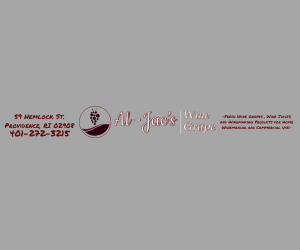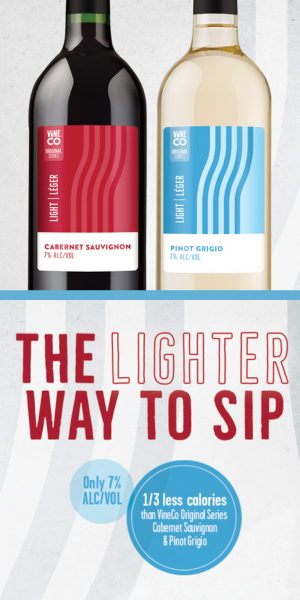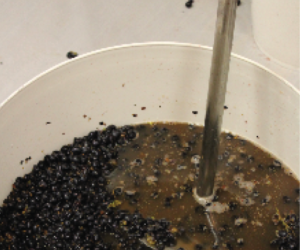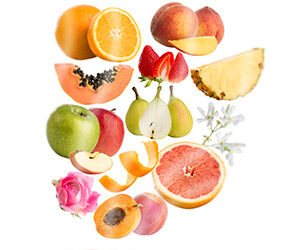Q I’ve heard that a lot of wineries are using ozone for their sanitation programs. I make about ten barrels of wine a year — should I buy an ozonator machine?
Bernice Michel
Fillmore, California
A Though ozone is an excellent tool for winery sanitation, the short answer is that unless you’ve got over fifty barrels of wine and sell it for a living, you probably are better off leaving the expensive machines to those that can justify the expense. The machines that generate ozonated water run in the thousands of dollars and at the scale you make wine the extra sanitation benefit you would get probably isn’t worth it.
Ozone is an unstable molecule that is a powerful oxidizer. Ozone-generators use UV light to zap air or piped-in oxygen gas (O2) into ozone (O3). In most wineries, the ozone gas is then dissolved into a stream of water, which exits the stream as ozonated water and can be used to rinse tanks, barrels, drains, etc. Because oxygen really only likes to exist either in its natural gaseous form (O2) or connected to molecules that are easy for it to turn into, like water (H2O), the third, unstable oxygen atom in ozone is always avidly looking for somewhere else to go. This makes it an ideal candidate for sending a spare oxygen molecule over to say, a bacteria’s cell wall, disrupting that bacteria’s operations and, with enough of these rogue oxygen molecules (via adding across double bonds or decomposing to cause a free radical), killing it all together.
It’s easy to see why ozonated water (the easiest method of applying ozone to where you want it) has quickly become a sanitizing solution of choice for many wineries. It also “biodegrades” by quickly turning back into water or oxygen (if it doesn’t attach to organic matter like microbes) and if ventilated properly is harmless to humans (high concentrations of ozone in the air can be a respiratory hazard). However, with so many great sanitizers available to the small-scale winemaker, you’d really have to justify the cost before investing in an ozone generator for your winery. You can try mimicking ozone’s oxidizing power by using a hydrogen-peroxide producing powder, sometimes sold in the laundry section of supermarkets or increasingly through winemaking supply retailers. When dissolved in water, these powders form a strong base so you’ll have to make sure you do a citric acid wash and then clean water rinse after applying.
Update: household ozone machines are now available at a relatively affordable price.
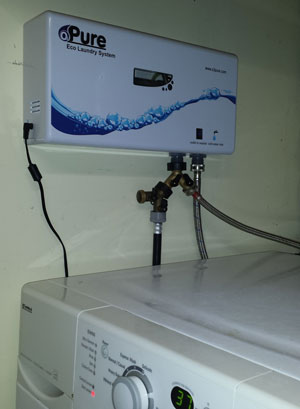
Q I really want to filter my Chardonnay like the big wineries do. Are there small-scale filters for people who only make a barrel of wine?
Nathan Maas
Portland, Oregon
A Absolutely. There are an increasing number of filters out there for the small-scale producer. From rough filters that’ll just knock out large, visible particles all the way down to membrane filters that will exclude tiny things like yeast and bacteria cells, home winemakers can now filter like the big guys. Check online and with your winemaking purveyor of choice, but when I was last in my local boutique winemaking supply store I saw a couple of company’s filters that I know are nationally available.
Most filters on the market are sold as a filter body (the better units are made out of metal and weigh at least a few pounds) that holds the refillable pads or cartridges, which actually do the physical work of filtering out the solids. That way you only spend the big bucks (on the filter body) once and can re-order the cheaper filter media only as you need them. I should mention here that filtration isn’t always necessary in winemaking, even on a commercial scale. If you’ve got a dry red wine that has gone through malolactic fermentation, it’s unlikely that you’ll run the risk of a re-fermentation in the bottle because you’ve taken most of the food away for yeast and the lactic acid bacteria — the two most common mic-robes to be living in a corked-up bottle of wine. Unless you are bottling a sweet wine or one that is not malo-lactic complete (all the malic acid has not been turned into lactic acid), you certainly don’t have to go through all the trouble of sterile (or even rough) filtering.
On that note, one thing that did disturb me a little bit as I was browsing the shelves for filters — I saw one brand of membrane filter labeled with an 0.50 micron pore size rating (the size of particle it’ll let through) and also labeled “Sterile Filter.” Keep in mind that a filter’s pore size must be 0.45 micron or smaller in order for it to exclude yeast and bacteria. (And some very recent enological studies have even suggested that 0.20 micron is the new “sterile” gold standard!) Anything larger and those “bugs” will be able to get through into your filtered wine, where they can cause re-fermentations and all sorts of unsavory mayhem. Read labels carefully and realize that some filter manufacturers may erroneously package their products.
Also keep in mind that the word “sterile” is used advisedly. Unless you’re a hospital or lab with an autoclave, you’re never going to be able to get your winemaking instruments and environment sterile. (By definition, “sterile” means no microbes are present at all.) Even the biggest wineries in the world must contend with a certain microbial risk and rely on stringent sanitation, equipment monitoring and post-bottling quality control (QC) follow up to monitor their product and to keep microbial populations at acceptable levels. As a small-scale winemaker you should feel good doing what they do — filtering when necessary coupled with good, clean winemaking.

